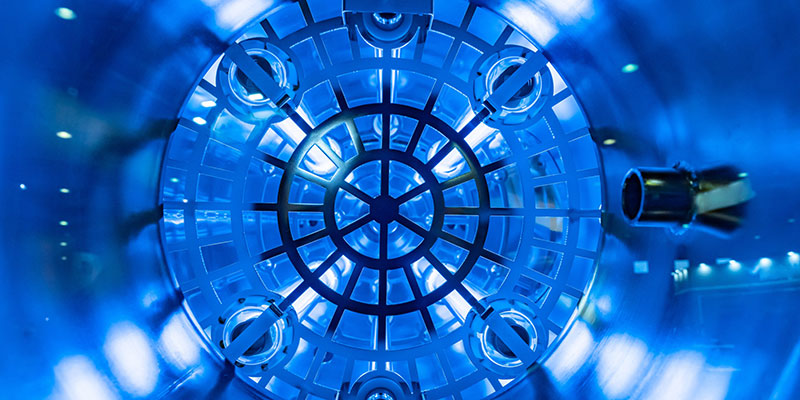With ultraviolet light, water can be safely disinfected without the risk of forming dangerous byproducts.
Chlorinating water can lead to the formation of harmful compounds, but there are treatment alternatives
Water utilities often chlorinate drinking water to kill pathogens that could pose a risk to human health. However, when chlorine is used to treat water, it can cause a chemical reaction with natural inorganic or organic compounds, which may be derived from decaying plants, algae, or animal matter, forming liquid by-products, known as trihalomethanes (THMs). Since many THMs are known carcinogens, they can pose a considerable health risk and are regulated in drinking water.
Health Risks Posed by THMs
Studies have shown that exposure to THMs in drinking water can pose a significant risk of bladder cancer. THMs also can cause colon cancer and other health issues, including damage to the liver, kidneys, and central nervous system, as well infertility, miscarriages, still births, birth defects, and other problems with the reproductive system. Studies have shown that THMs can also get into our bodies via the skin or when we inhale steam while showering, bathing, or washing the dishes.
This poses a dilemma: If we don’t disinfect water to kill pathogenic microbes, we can get sick; and if we do disinfect water we can be exposed to carcinogenic compounds that can also make us sick. So how do we ensure drinking water is free from pathogens as well as compounds that can be even more damaging to our health in the long term?
Preventing Formation of THMs
According to the Water Research Center, disinfection byproduct concentrations are influenced by how much natural organic matter is present in the water, and tends to increase with pH, temperature, and time. Therefore, if water utilities are using chlorine to disinfect water, they should only do so once the water has been adequately filtered to remove the organic matter that serves as a precursor for the chemical reaction with chlorine that leads to the formation of disinfection byproducts.
Alternative Methods of Disinfection
Chlorination is commonly used for dealing with microbes in water treatment, particularly because it’s inexpensive, effective, and doesn’t require any specialized equipment. But there are other treatment options to eradicate pathogens. Ultraviolet (UV) radiation, which alters the DNA in the cells of microorganisms and prevents them from reproducing, is another effective method of disinfection. Due to health concerns associated with chlorination, UV disinfection has seen a surge in popularity in recent years.
UV radiation has three wavelengths: UV-A, UV-B, and UV-C. The latter (UV-C) possesses germicidal properties that make it effective as a disinfectant. UV disinfection is effective at killing bacteria and viruses, including Giardia lamblia and Cryptosporidium if certain design criteria are met. No chemicals are added to the water during UV disinfection, and no chemical byproducts are formed during the process.
Unlike chlorination, UV disinfection does not offer residual disinfection to kill bacteria that may be introduced into the water after it has been treated. Therefore, in some case, chlorination may still be the preferred treatment option. For example, in systems with extensive networks of pipes and storage tanks, there is a higher risk of bacterial regrowth or recontamination during the water distribution process. Chlorination with its residual disinfection provides ongoing protection against such risks by continuously killing or inactivating microorganisms that may enter the system after the initial treatment.
Built-In Disinfection
Fluence solutions — including its modular Aspiral™ wastewater treatment and NIROBOX™ water treatment plants — can be customized with a tertiary disinfection stage to ensure the production of safe drinking water. Contact Fluence and our experts can help you find the best — and safest — disinfection process for your needs.

